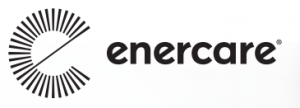To say Indoor Air Quality (IAQ) has taken over the property management conversation would be an understatement. In the wake of the pandemic, the ability to maintain clean and hygienic indoor environments has become central to keeping occupants safe, comfortable and willing to remain in their spaces.
“Property operators have always prioritized indoor air quality to some extent, but now they recognize that it’s a top consideration for their occupants and the building’s operations,” says Tom Mannsfeldt, Senior Manager, Commercial Sales at Enercare Commercial Services. It makes sense that IAQ is high on building occupants’ radars.

As the world returns to “normal”, many office workers, residents, and building visitors alike are still anxious about sharing their office or living space without the heightened pandemic measures (e.g., masks, social distancing, etc.) that have been in place over the last two years.
As such, property managers are compelled to implement technologies and protocols that will ensure everyone who walks through their doors feels safe and comfortable.
“Naturally, the first goal of IAQ is to protect tenants and visitors in a time when risks of airborne illnesses are still very real. By doing so, however, you also address another goal of IAQ in property management, which is to keep building vacancy rates low,” adds Mannsfeldt.
 Many factors contribute to poor indoor air quality within a commercial or multifamily building. Public spaces such as lobbies, meeting rooms and offices are prime territory for pollutants to be tracked in through the door or created by any number of activities (e.g., cleaning, equipment, cooking, etc.). Left unchecked, these pollutants can take their toll on occupants. Here’s where taking several steps to clear the air can make a world of difference:
Many factors contribute to poor indoor air quality within a commercial or multifamily building. Public spaces such as lobbies, meeting rooms and offices are prime territory for pollutants to be tracked in through the door or created by any number of activities (e.g., cleaning, equipment, cooking, etc.). Left unchecked, these pollutants can take their toll on occupants. Here’s where taking several steps to clear the air can make a world of difference:
- Eliminate the sources: Bolstering IAQ begins with identifying and eliminating the sources of pollutants. For example, says Mannsfeldt, “If we know that harmful particulates are coming in through the front lobby doors, we can look at ways of minimizing that by, perhaps, installing an air curtain. Similarly, if we find out that certain cleaning processes are leaving harmful elements in the air, we can look at practices or technologies that can mitigate that as well.”
- Enhance filtration and fresh air delivery: Despite best efforts, there will always be the risk of airborne pollutants or illnesses. At the same time, we can always use filtration and fresh air delivery technologies that will work around the clock to trap and eliminate harmful indoor elements and keep clean air cycling through the building. Even still, adds Mannsfeldt, “We see a lot of buildings that have fresh air delivery already, but they’re either underperforming or not being maintained. In some cases, they’re turned off completely to save expenses, which is a problem because that means clean air isn’t being brought into the space.”
- Monitor your environment: Maintaining healthy IAQ requires visibility into environmental conditions. To that end, there are benefits to using IAQ systems with sensor technology that can monitor various air quality factors and provide real-time reports to building staff.
Healthy IAQ requires a tailored strategy. For this reason, there are advantages to working with indoor air quality specialists who can assess and address a building’s unique requirements.
 For example, says Mannsfeldt, “What we can do is come in, conduct a site audit, and use that data to map out an IAQ approach that works best for that particular space. It may be a building-wide approach, but it may be just certain areas more than others. Either way, we can map out what is needed and provide a report and action list detailing how to achieve an ideal IAQ.”
For example, says Mannsfeldt, “What we can do is come in, conduct a site audit, and use that data to map out an IAQ approach that works best for that particular space. It may be a building-wide approach, but it may be just certain areas more than others. Either way, we can map out what is needed and provide a report and action list detailing how to achieve an ideal IAQ.”
This custom-made approach is essential, he adds, as it ensures that investments in IAQ align with the facility’s actual needs and budget: “If you’re going to spend money on the solution, you obviously want to solve the problem. And so that means targeting your pain points in a way that’s most effective and budget-friendly.”










